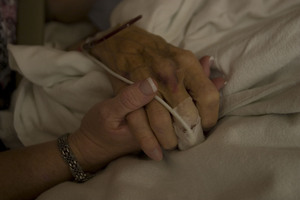



Perspectives on Communication

Communication is the cornerstone of healthcare.
Patients want and need good communication as part of their care, people feel better about their care when we communicate more effectively.
Communication is about our humanity, as well as patient safety.
In this 8 minute video comedian Deborah Kimmett examines our efforts at "Talking to Sick People"
Communicating with people is the cornerstone of health care, and the most important communication is with our patients and clients.
This video makes the following key points about communicating with sick people:
Did they ask for advice?
Did they ask you ?
THINK, is it: Thoughtful? Honest? Intelligent? Necessary? Kind?
Silence is okay
We all make mistakes, just observe them and correct them
Play it by heart
Keep your sense of humour
One day the person in the bed may be you
These key elements in communicating with those we care for can go a long way in working with our colleagues and creating a culture of respect and patient safety.
The importance of communication and collegiality is acknowledged by healthcare regulatory bodies as well as the consumers of health care.
"Nurses have a regulatory obligation to work collaboratively and promote an environment of collegiality. They have a commitment to each other, their health care colleagues and the nursing profession. Establishing collegial relationships requires a wide range of communication strategies similar to the interpersonal and communication skills used in developing nurse-client relationships - the difference being the sharing of power and having common goals." [1]
The same can be said of all health care providers, whether regulated by a college or our own sense of duty to provide the best care possible.
_________________________________
1. Mastering Communication. Angela McNabb RN.p. 4. College of Nurses of Ontario 2006 www.cno.org/pubs/mag/2005/09Sept/feat_comm.htm accessed August 14, 2009
 Previous
Previous